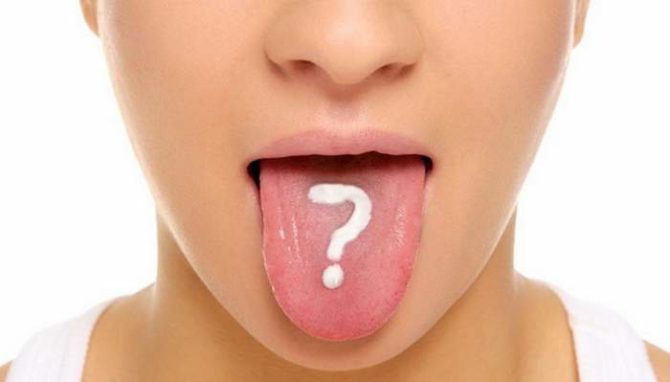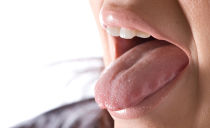What does white plaque say in an adult's tongue: 15 reasons and treatment
The oral cavity is a separate section of the digestive system. It is lined with its own mucous membrane and has a unique microflora, and is also an indicator of the work of other organs and systems. For example, white plaque in the tongue of an adult can appear both due to banal non-compliance with hygiene, and against the background of the development of diseases of the stomach, gall bladder, liver and other organs, systems.
Content
- Morning raid on the tongue: norm or pathology
- The nature of the plaque in the language: what happens and what it says
- Why white plaque in the language: 15 most common reasons
- Treatment and diagnosis
- How to remove plaque from the tongue and is it worth it
- Treatment with folk remedies at home
- Video: causes of white plaque in the language
Morning raid on the tongue: norm or pathology
Go to the mirror after sleeping and examine your mouth. If you find a uniform, translucent coating of white shade in your tongue, do not worry: in the morning this happens with most healthy people. The fact is that microbes live in the mouth. Both pathogenic and beneficial, which are involved in digestion. During the day, they are partially washed off with saliva and water. At night, the salivary glands work less actively, the tongue is motionless, a person does not drink. As a result, bacteria multiply and thicken abundantly, forming a white coating. Clean your tongue with the back of your toothbrush. If you succeeded, and the body was not covered with a new film for three hours, you are in perfect order.
You need to think about it if the mass covers individual parts of the tongue, has a dense or loose structure, is poorly cleaned and quickly restored. Such a plaque indicates a decrease in immunity, which led to the growth of pathogenic microflora. Do not try to deal with the problem yourself. Better go to the clinic to find out the exact cause of the disease.
The nature of the plaque in the language: what happens and what it says
Sometimes the therapist can establish a primary diagnosis after examining the patient’s oral cavity. This is facilitated by the nature of the plaque, which is determined by the following features:
- The thickness. If the film is thin, the person fell ill recently. A deep layer indicates the presence of chronic infections. And the thicker it is, the longer the pathology develops.
- Consistency. The curdled white coating, which is easily separated from the tongue, is a symptom of a fungal disease, for example, candidiasis (thrush). Dry can appear with dehydration, and thick and dense - with infectious pathologies.
- Color. White plaque has a variety of shades. For example, with gastritis and an ulcer - gray. With enterocolitis - yellowish or brown.
The darker the color, the more neglected the disease. But keep in mind that the coloring of the tongue can occur from some drinks and food. Therefore, try to remember what you used before you looked in the mirror.
- Place of localization. This is the most striking sign that allows you to understand why an adult has formed a white coating on the tongue, with 80% accuracy. If the formation is concentrated on the tip of the organ, the respiratory system is affected. In the middle - cardiovascular. At the root is the intestines. On the sides of the root are the kidneys. If plaque is stained in different parts of the tongue, the cause is a fungal infection.
- Simplicity of separation. The denser the bacterial film, the more difficult it is to remove. And the more serious the disease.
Any plaque in the tongue is accompanied by bad breath. And this is not surprising, because the mass consists of bacteria, their waste products, white blood cells, fibrin, dead epithelial cells and the tips of the papillae of the tongue. However, if you feel a strong putrid, sour or fishy smell, hurry up to make an appointment with your doctor. Such a symptom indicates serious inflammation and does not bode well.
Why white plaque in the language: 15 most common reasons
The tongue is covered with white deposits due to a decrease in general or local immunity, as a result of which uncontrolled reproduction of pathogenic microflora begins. This can happen against the background of a variety of diseases: viral, bacterial, fungal, internal organs. The answer to the question of why a plaque appears in the tongue can be commonplace: due to a violation of salivary function, lack of fluid in the body, bad habits, or poor oral hygiene. Consider the 15 most common and serious reasons.
Glossitis
This is an inflammation of the tongue, which can manifest itself as an independent disease or against the background of other pathologies. According to the Russian Ministry of Health:
- allergy leads to glossitis in 60% of cases;
- diseases of the gastrointestinal tract - in 50%;
- autoimmune - in 30%;
- stomatitis - in 50%;
- anemia - in 20%.
A pronounced sign of glossitis is excessively pale or red tongue with a touch of white. Sometimes ulcers, swelling, deformation of the organ are observed. The patient experiences a burning sensation, sharp pain. Salivation increases and sensitivity of taste buds decreases.
Lichen planus
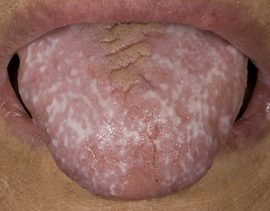 The entire oral cavity is covered with a red rash, which is difficult not to notice. However, sometimes the disease is asymptomatic. In this case, the sores look like light spots of irregular shape (see photo). And since the tongue is most often covered with a rash, it can be mistaken for a white coating caused by insufficient toothbrushing.
The entire oral cavity is covered with a red rash, which is difficult not to notice. However, sometimes the disease is asymptomatic. In this case, the sores look like light spots of irregular shape (see photo). And since the tongue is most often covered with a rash, it can be mistaken for a white coating caused by insufficient toothbrushing.
Lichen planus is not only insidious, but also dangerous. Against its background, cirrhosis of the liver, gastritis, diabetes mellitus or a stomach ulcer can develop. A biopsy of the affected tissue is performed to confirm the diagnosis. Treatment should be comprehensive, since the cause of the pathology has not yet been identified.
Oral dysbiosis
It is a consequence of intestinal dysbiosis or taking antibiotics. It proceeds in several stages:
- At the first and second stages, the population of opportunistic bacteria increases. There are no pronounced symptoms.
- On the third, a dense white coating on the tongue is formed. The patient experiences a burning sensation and an unpleasant aftertaste in his mouth.
- At the fourth stage, stomatitis develops. The surface of the tongue is covered with ulcers, salivation increases, the temperature rises sharply.
Treatment is not complete without addressing the cause of the disease. Usually it is associated with the intestines, so in addition to the dentist’s office, you need to visit a gastroenterologist. You will have to work hard to restore the microflora in the affected organ and prevent the recurrence of the disease.
Gastritis
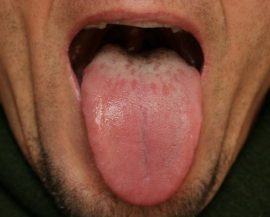 Gastrointestinal diseases are the most common cause of a specific bad breath and white plaque in the tongue. Usually it is localized in the middle of the organ of speech, sometimes accompanied by the formation of cracks. Such symptoms may indicate the initial stage of gastritis. If nothing else bothers, just adjust the power menu. However, it is better to consult a gastroenterologist to prevent the transition of an acute form of pathology to a chronic one.
Gastrointestinal diseases are the most common cause of a specific bad breath and white plaque in the tongue. Usually it is localized in the middle of the organ of speech, sometimes accompanied by the formation of cracks. Such symptoms may indicate the initial stage of gastritis. If nothing else bothers, just adjust the power menu. However, it is better to consult a gastroenterologist to prevent the transition of an acute form of pathology to a chronic one.
Ulcer
Among all diseases of the gastrointestinal tract, internal defects are manifested by a plaque in the tongue most often. Therefore, if you have been diagnosed with an ulcer, do not guess the nature of the bacterial film, but immediately contact a gastroenterologist.
Exacerbations of pathology occur in spring and autumn.In addition to plaque, pain, discomfort after eating, heartburn, nausea, and vomiting can disturb. If medical treatment is ignored, the walls of the stomach will be damaged so much that surgical intervention is required.
Liver failure
It occurs in both acute and chronic form. In both cases, there is a strong white or yellow plaque in the mouth, which covers the tongue from tip to base and gives off a very pungent ammonia odor.
Candidiasis
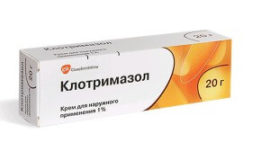 Curd white plaque on the tongue is formed against a background of fungal diseases. The most common is thrush. She is easily diagnosed and treated. A dermatologist may prescribe Bifiform, Diflucan, Clotrimazole, or another medicine. As a prevention of relapse, you can use potassium iodide, vitamin and mineral complexes, immunostimulants.
Curd white plaque on the tongue is formed against a background of fungal diseases. The most common is thrush. She is easily diagnosed and treated. A dermatologist may prescribe Bifiform, Diflucan, Clotrimazole, or another medicine. As a prevention of relapse, you can use potassium iodide, vitamin and mineral complexes, immunostimulants.
Fungal diseases develop for various reasons:
- In the oral cavity of each person there is a small amount of Candida fungi. And that is the norm. But when immunity decreases, the population of these harmful microorganisms increases. As a result, thrush develops. Therefore, keep in mind that it can appear even in those who keep the oral cavity in perfect cleanliness.
- The propagation of fungal flora contributes to the elderly, wearing prostheses and other orthopedic structures. In people over 60, candidiasis occurs in 10% of cases.
- According to statistics from the Ministry of Health, 50% of babies get thrush. Therefore, periodically inspect the child’s language.
Scarlet fever
This is an acute infectious disease that is transmitted by airborne droplets. The causative agent is Streptococcus group A. It is accompanied by a high temperature and distinctive skin rashes, which is why a whitish coating on the tongue rarely becomes the main reason for going to the doctor. In addition, the whiteness is temporary and disappears a few days after infection.
Diphtheria
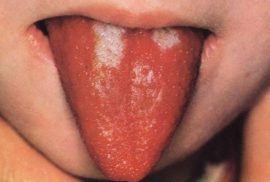 Diphtheria is an acute bacterial infection. Transmitted by airborne droplets. At the root of the tongue of an infected person, a white coating with a dirty gray tint forms. The surface below it becomes inflamed and turns red. Do not try to clean the affected organ so as not to injure the epithelium. It is best to see a doctor as soon as possible.
Diphtheria is an acute bacterial infection. Transmitted by airborne droplets. At the root of the tongue of an infected person, a white coating with a dirty gray tint forms. The surface below it becomes inflamed and turns red. Do not try to clean the affected organ so as not to injure the epithelium. It is best to see a doctor as soon as possible.
Respiratory system diseases
This group includes all hereditary and systemic respiratory diseases. The tongue is covered with white mass due to the fact that a person often breathes through the mouth. This leads to drying out of the mucous membrane and an increase in the number of microorganisms.
Leukoplaxia
Damage to the oral mucosa. A characteristic sign is the appearance of spots of grayish or white in the tongue, larynx. Initially, they have a moist structure, but they harden over time. As a result, the surface becomes rough.
Bronchitis
White plaque on the tongue appears only in chronic bronchitis. The patient complains of the following symptoms:
- Cough. The first days are dry, then wet.
- Weakness.
- Fever.
You can cope with the disease with the help of medications, heavy drinking, inhalation, bed rest. To alleviate the condition of the patient, ventilate and moisten the room, do not let him lie on his back. As soon as bronchitis recedes, the plaque is easy to clear and will no longer appear.
Pancreatitis
In chronic pancreatitis, the metabolism is disturbed in the human body, various pathological conditions can occur. As a result, Candida bacteria and fungi actively multiply, a white coating begins to form. As side symptoms, dry mouth, an increase in the papillae of the tongue are always present. A gastroenterologist will help to cope with the problem.
Angina
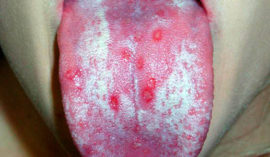 Plaque on the tongue at high temperature may mean that a person develops a sore throat. Pain when swallowing, weakness, malaise - with a combination of such symptoms, a physician should be visited.It is imperative to maintain oral hygiene. You need to brush not only your teeth, but also your tongue.
Plaque on the tongue at high temperature may mean that a person develops a sore throat. Pain when swallowing, weakness, malaise - with a combination of such symptoms, a physician should be visited.It is imperative to maintain oral hygiene. You need to brush not only your teeth, but also your tongue.
Stomatitis
If the mucous membrane in your oral cavity is swollen, reddened, sores and constantly hurts, check for stomatitis. This ailment is associated with an increase in the number of pathogenic bacteria that accumulate on the tongue, gums, cheeks and form white oval spots. If you touch them while eating, it will hurt, because the epithelium under the film is ulcerated.
The disease can occur for various reasons:
- Local: caries, poor-quality dentistry, dysbiosis, smoking, alcohol consumption, food allergies.
- Common: lack of vitamins, stress, mucosal injuries, intestinal infections.
In the early stages of stomatitis, only one ulcer is formed, in the later stages, from a few to tens. Among the constant symptoms, headaches, weakness, fever, excessive salivation are also observed.
It is impossible to cure the disease on your own, because you need professional cleaning. See your dentist. It will remove tartar, soft plaque. After this, you can continue the therapy at home, resorting to the treatment of the oral cavity with antiseptic drugs and rinses.
Treatment and diagnosis
Under the treatment of white plaque in the language it is customary to mean elimination of the reason why it was formed. To do this, you need to visit a doctor. If you don’t know which doctor to go to, go to the therapist. He will examine the oral cavity, determine the nature of the plaque, ask a bunch of questions about well-being and, based on all this, draw conclusions about the general state of health. Then the therapist will tell you which doctor you need to visit to make an accurate diagnosis. If there is a suspicion that a white coating on the tongue is caused by gastritis, a gastroenterologist will treat you. If the cause is a poor condition of the teeth - a dentist. In a fungal infection, a dermatologist.
Diagnosis of the disease that caused white plaque in the tongue may include measures such as general and biochemical blood tests, ultrasound, and bacteriological culture. And if the doctor suspects gastritis or other gastrointestinal pathology, then the coprogram is a well-known fecal analysis.
How to remove plaque from the tongue and is it worth it
 During treatment and after it, observe oral hygiene. It is necessary to remove the white film both from the surface of the teeth and from the tongue. You can use the same brush, the main thing is that its back side should be equipped with a special pad that has a softer texture and is not able to damage the epithelium of the muscular organ. Work your teeth first, then turn the brush over and go over your tongue. It must be directed from the base to the tip. Keep in mind that most bacteria are concentrated on the back of the tongue, since this area is least involved in movement. Treat it as thoroughly as possible.
During treatment and after it, observe oral hygiene. It is necessary to remove the white film both from the surface of the teeth and from the tongue. You can use the same brush, the main thing is that its back side should be equipped with a special pad that has a softer texture and is not able to damage the epithelium of the muscular organ. Work your teeth first, then turn the brush over and go over your tongue. It must be directed from the base to the tip. Keep in mind that most bacteria are concentrated on the back of the tongue, since this area is least involved in movement. Treat it as thoroughly as possible.
In addition to pasta, rinses, it is worth storing a bottle of harmless, but reliable antiseptic. And use it as needed. For example, with a cold, which also leads to a decrease in immunity and the growth of pathogenic microflora.
Treatment with folk remedies at home
If you do not trust pharmaceutical means for rinsing the oral cavity, you can prepare your own. The easiest option is baking soda solution. Mix one teaspoon of the substance in a glass of warm water. Such a concentration will be enough to remove most of the white bacterial plaque that surrounds the tongue.
 A few more ways to prepare a rinse:
A few more ways to prepare a rinse:
- Decoction of oak bark, sage or chamomile. All these herbs are sold at the pharmacy. The brewing process is detailed on the packaging.
- Propolis tincture on alcohol. You can cook it yourself or buy from an amateur beekeeper. But do not give such a tool to a small child, otherwise, burn his tongue.
Follow oral hygiene and remember: careful attitude to your health, careful study of symptoms and timely examination will help to avoid serious diseases of the gastrointestinal tract and other body systems.
Video: causes of white plaque in the language

